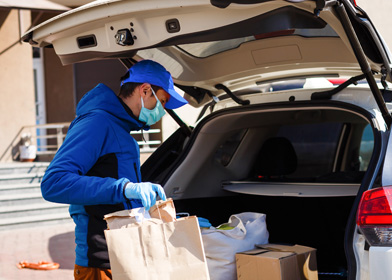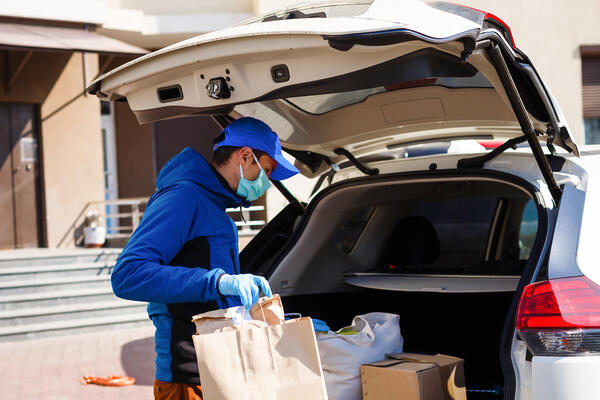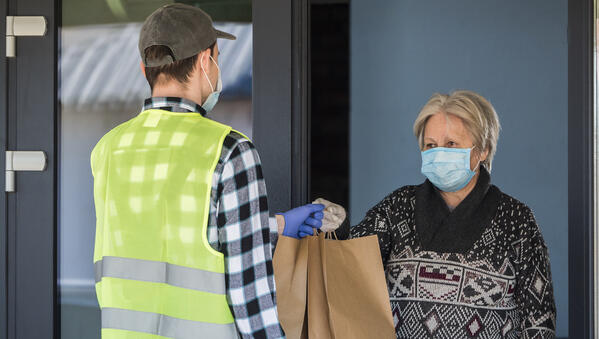
Restaurant Takeout and Curbside Pickup Trending to Continue Growing
In what felt like the blink of an eye, life as we knew it changed. As the spread of the COVID-19 coronavirus continued, it became abundantly clear that what was previously considered “normal” had quickly transformed into varying degrees of uncertainty. Students of all ages were waking up to the reality of virtual schooling. Many people found themselves to be working remotely or working on reduced hours and even without a job. Restaurants everywhere were pivoting their business models in order to continue operating, albeit at a fraction of what they were used to.
Focusing almost exclusively on takeout and curbside pickup has allowed many restaurants to stay afloat and keep their staff employed for as long as possible. It’s also interesting to note that it wasn’t just restaurants that began moving to curbside customer service. This trend has been around awhile but, in light of the situation, was gaining traction with retail companies such as Kohl’s, Target and Walmart, just to name a few.
But as the infamous “curve” continues to flatten, and states begin to open back up – slowly and safely – what comes next? Some believe this change in consumer habit is signaling a shift in business that will continue well into the future.

According to a consumer survey from CommerceHub, 59% of respondents say they are more likely to continue using curbside pickup, and that figure increased to 75% among those who subscribe to multiple delivery services (including Amazon Prime). In a separate study conducted by Washington State University, nearly 48% of the study’s respondents identified that they would wait anywhere between one and three months before visiting a restaurant after its dining room has opened back up.
When a large percentage of consumers still feel uncertain and cautious about dining in at their favorite local restaurant, the likely result is that curbside is here to stay. And while this form of customer service continues to grow and evolve, those that are more apt to sustain this business model are chain restaurants. When the coronavirus hit, they were able to adapt much quicker, and many were already utilizing drive through and/or some kind of takeout service.
Where this becomes more impactful is with the independent restaurants, from both a food packaging and method of handling perspective. They have had to make a seismic shift and learn to adapt as these trends developed. Now, looking to the future, it will be these same independent restaurants that will need to continue expanding their service flexibility in order to stay relevant; especially since we can expect continued social distancing.
Not surprisingly then, ongoing social distancing translates to a predictable reduction in seating capacity in the dining rooms of our favorite restaurants. In order to make up for any additional lost revenue due to these changes, restaurants will need to continue growing their delivery and curbside pickup offerings.
Thankfully, that's a function of the food service industry that continues to evolve and gain traction.
From a manufacturing perspective, new and innovative products are being developed as a means to support that initiative. Updated to-go packaging and equipment are coming online to improve the quality of the food, as well as the service being provided. As such, this part of the industry will continue to see growth by providing restaurants greater options to work with.
The biggest trick – the one thing that restaurant owners need to focus on – is providing their customers with an experience that mimics what they have come to expect when they would otherwise be enjoying their meal from the dining room. The gap in time between when the meal is boxed up, delivered to the customer’s home or handed off at a curbside point of sale, and actually sitting down and eating it is at the heart of the issue. Regardless of whether it’s a five-minute delay or a thirty-minute journey, the experience should always be the same and of the highest quality. Utilizing packaging that maintains proper heating and cooling requirements will be a key component to that equation.
In addition to the importance on food quality is the safety and security measures that are tied to it. As more and more third-party food delivery operators enter this space, consumers are becoming hyper-sensitive to ensuring that the food they have ordered is untampered and safe to consume. In response, additional products that focus on tamper-resistant packaging, such as adhesive, tamper-proof paper strips, are being made available. These products provide a greater a sense of safety and peace of mind for both the consumer and the restaurant owner.

Despite consumer excitement about their favorite restaurants opening back up, there will still be a hesitation to return to pre-COVID-19 restaurant behavior. We will likely continue to see greater adoption of curbside and delivery across the industry. This is also compounded by the fact that many operators were already realizing a steady climb in the number of orders placed through digital channels based on an increase in consumer comfort using those platforms.
How restaurants respond and evolve their delivery and curbside pickup services will directly impact any reinvention of their branding, as well as ongoing customer retention. Even in these difficult times, when customers are (hopefully) more patient with restaurant customer service, this continued pivot to a new or enhanced business model should be approached delicately, thoughtfully and with a mind firmly set on success.
Looking for help to get your takeout, delivery and curbside pickup business going? Reach out to us to speak with one of our specialists about the best next steps for your business and everything you need to get started or build on what you have in place.